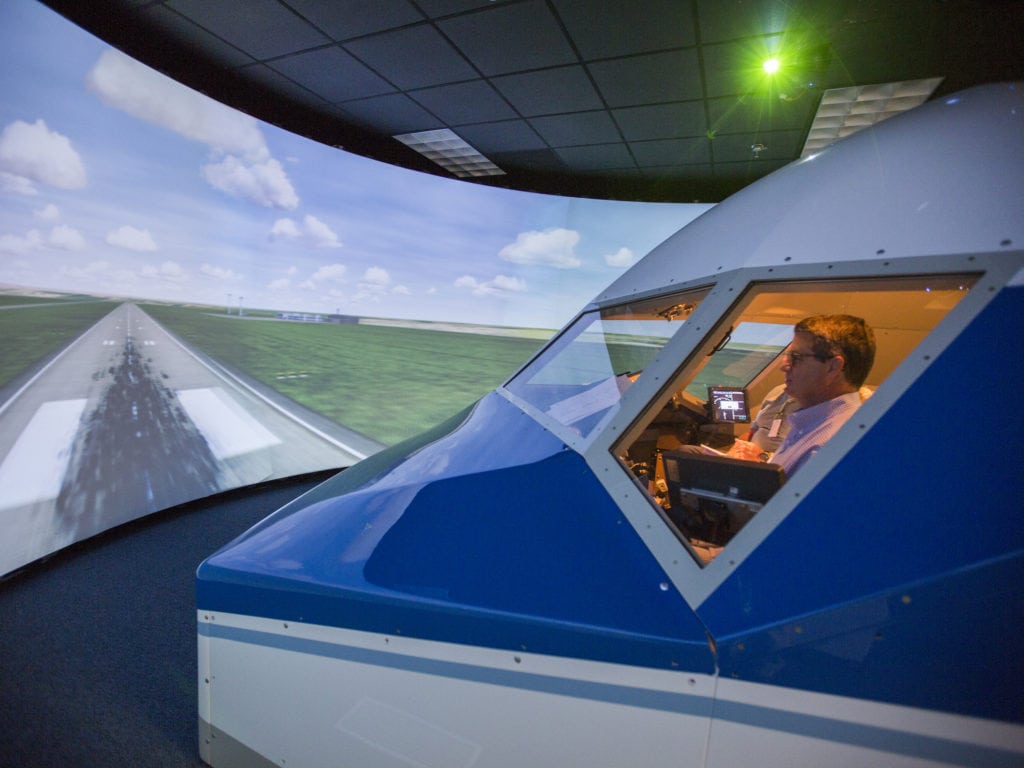
At NASA’s Langley Research Center, retired airline pilots test procedures that will be used during upcoming flight tests of a new aircraft spacing tool. The simulator is set up like a 757 jet, similar to one of the aircraft in the ATD-1 flight tests.
Photo: NASA Langley / David C. Bowman
NASA is planning an in-flight test for some new software Feb. 9, the agency said. The test is part of a series of flights called Air Traffic Management Technology Demonstration-1 (ATD-1), in which NASA’s Aeronautics Research Mission Directorate is set to test airborne flight deck interval management software.
The campaign is to last a month, involving a Boeing 757, what NASA is referring to as a “business jet” from Honeywell and a Boeing 737 provided by United Airlines. The aircraft are to be equipped with software developed by NASA that can more precisely and safely manage arrivals to airports. The plan is to fly the aircraft over Washington State. The business jet is to fly lead and broadcast its speed and position information to the other aircraft. They will follow, allowing the test software to automatically calculate the speeds and distances the pilots must maintain between aircraft. The information would then be displayed on a tablet computer in the cockpit. All pilots involved have gone through training modules and simulations.
The goal of the whole campaign is decrease time spent in the air, thus lowering fuel costs and reducing noise and engine emissions. The software was developed at Hampton, Virginia’s NASA Langley and is part of the Airspace Technology Demonstration Project managed from NASA’s Ames Research Center in Moffett Field, California. The FAA and other aviation entities are also involved.